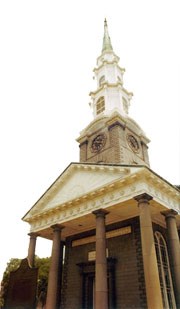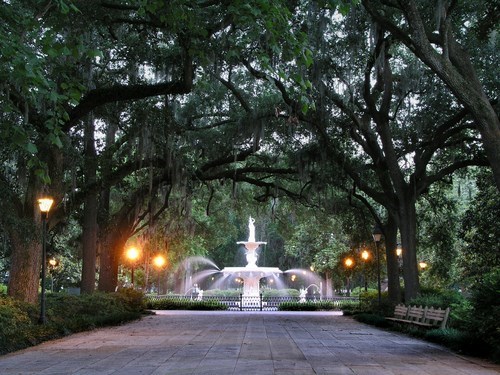
FOPU Savannah, Georgia is known as America’s first planned city. General James Oglethorpe laid the city out in 1733 with a series of grids that allowed for wide open streets intertwined with shady public squares and parks that served as town meeting places and centers of business. Savannah had 24 original squares with 22 still in existence. During the American Revolution, the British took Savannah in 1778, and held it into 1782. A land-sea force of French and Americans, led by Casimir Pulaski, tried to retake the city in 1779, first by siege and then by direct assault, but failed. After independence was secured, Savannah flourished. Soon, farmers discovered that the soil was rich and the climate favorable for cultivation of cotton and rice. Plantations and slavery became highly profitable systems for whites in the neighboring "Lowcountry" of South Carolina. So Georgia, the free colony, legalized slavery. The trans-Atlantic slave trade brought many African-Americans through the port of Savannah. Many who stayed in the area formed the unique Gullah culture of the coastal communities in Georgia and South Carolina. With the wealth brought by cotton, residents built lavish homes and churches throughout the city. After the invention of the cotton gin on a plantation outside of Savannah, the city rivaled Charleston as a commercial port. Many of the world’s cotton prices were set on the steps of the Savannah Cotton Exchange. The building is still in existence. But Savannah was not spared from misfortune. Two devastating fires in 1796 and 1820 each left half of Savannah in ashes, but residents re-built. The year 1820 saw an outbreak of yellow fever that killed a tenth of its population. Savannah also survived fires, epidemics and hurricanes, but always bounced back.

NPS Photo Antebellum Savannah was praised as the most picturesque and serene city in America. It was known for its grand oaks festooned with Spanish moss and its genteel citizenry. The Georgia Historical Society was founded in that era. Magnificent Forsyth Park got its ornate fountain in 1858. During the Civil War, the city suffered from sea blockades so strict that the economy crumbled. "Impregnable" Fort Pulaski at the mouth of the Savannah River was captured by Union soldiers in 1862. The city itself did not fall until Union General William Tecumseh Sherman entered on December 22,1864, after burning the city of Atlanta and everything else in their path on his "march to the sea." Upon entering Savannah, Sherman was said to be so impressed by its beauty that he could not destroy it. On December 22, 1864, he sent a famous telegram to President Abraham Lincoln, offering the city as a Christmas present. Reconstruction soon began in the city. Food was scarce in Savannah, and the economy was in ruins. Despite these hardships Savannah endured. Cotton rebounded and Savannah once again became the world hub of cotton shipping until the early 1920s. The economy rebounded further during World War II with the construction of Liberty ships along the Savannah River. By the 1950s, Savannahians looked to save its historic past with the beginning of a large-scale preservation movement that continues today. Savannah has since become one of the most historically significant cities in the nation with several historic districts that preserve the cities beautiful architecture spanning over three centuries. Explore more at Visit Savannah. |
Last updated: December 11, 2020
